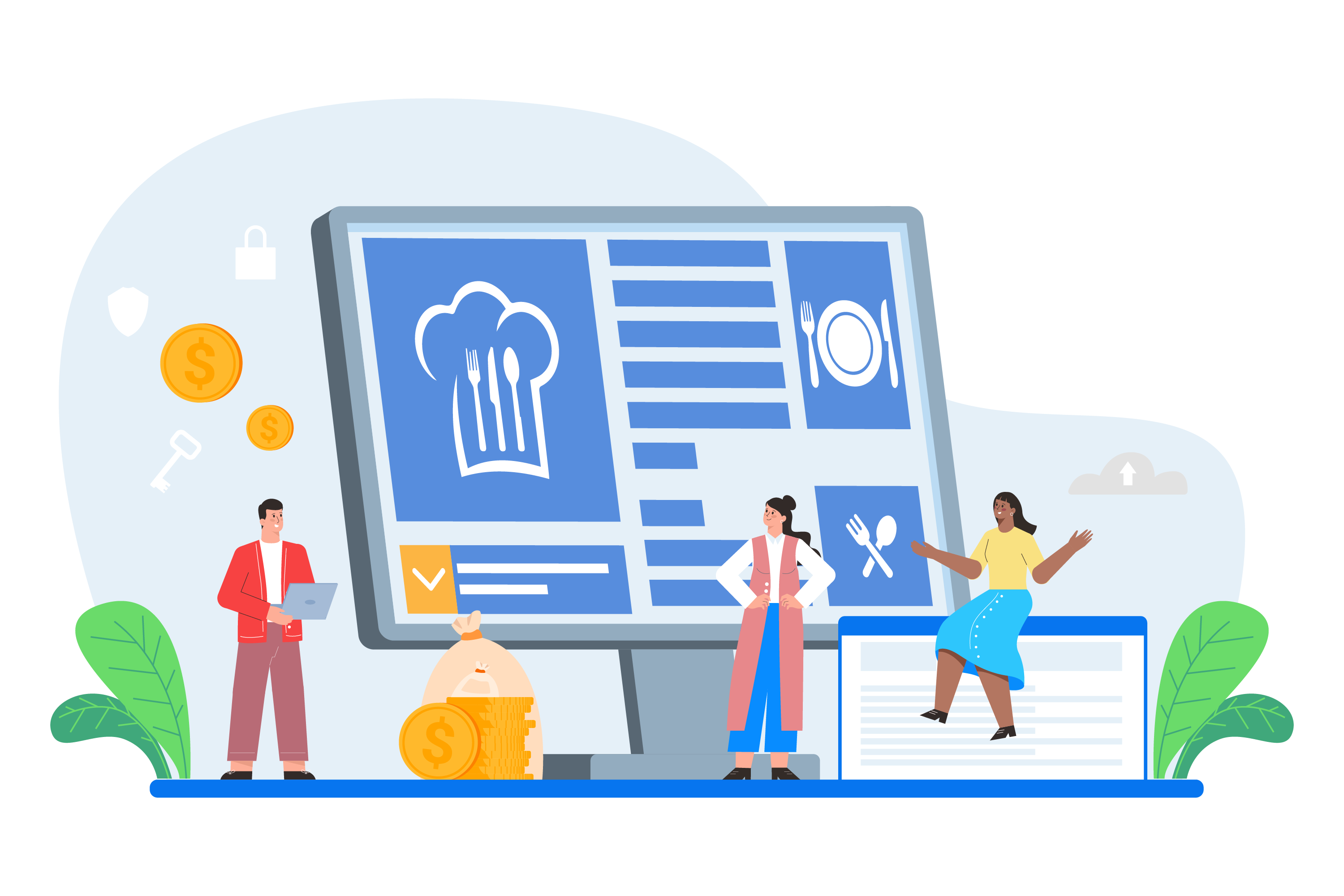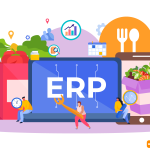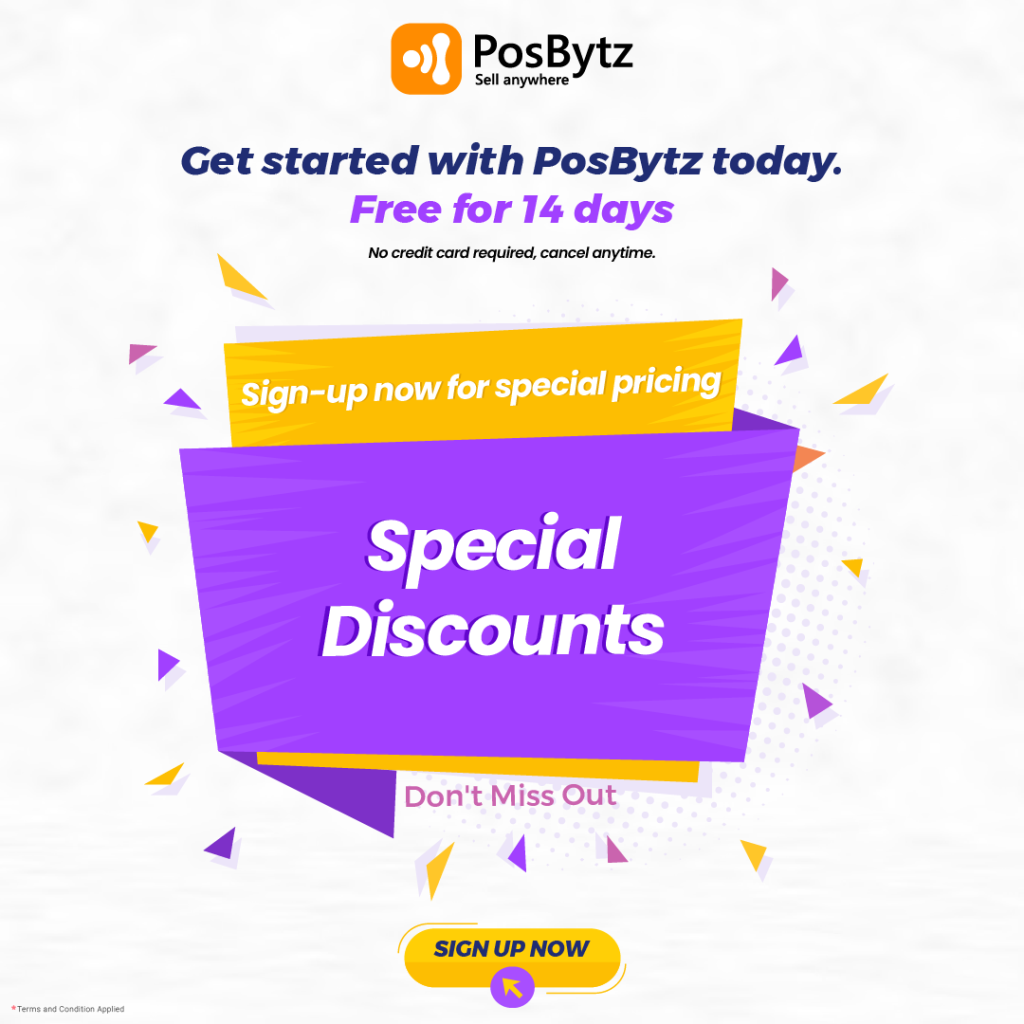- Email:support@posbytz.com
27 Jan

Are you a restaurateur? Then, it’s time for you to explore the idea of employing POS software for restaurants, which might completely change the way your restaurant business operates!
In a nutshell, a POS can be defined as a computerized system that enables firms to handle orders, food inventories, cash flows, and many other back-office duties.
You might notice that handling so many things at once by yourself might be daunting! Not to mention, you must keep track of your sales!
Here is where SaaS will enter the picture to assist you in effectively managing and tracking all of your restaurant operations. In the restaurant and retail sectors, SaaS point-of-sale solutions are gaining popularity.
That might seem a little perplexing, but let’s check how SaaS POS systems function and the perks they provide restaurateurs.
Perks of Implementing SaaS POS Systems For Restaurants

Software as a service for restaurant apps is web-based, similar to other mobile or tablet applications, and companies pay an annual or monthly subscription to employ them.
Clients rent SaaS restaurant POS management systems rather than purchasing on-premise software that must be installed and operated on a computer at the client’s location.
Due to their numerous benefits, a rising number of restaurants are replacing outdated restaurant management solutions with cloud-based systems like SaaS.
The perks of implementing SaaS POS systems include:
Lower Cost:
Restaurant businesses must spend significant money on computer servers and software to use traditional POS suppliers. After purchasing these systems, restaurant operators will require an IT expert to install the program, set up the computer, and integrate the back office server.
Additionally, restaurants must pay for system maintenance and upgrades when the system demands new features or becomes outdated. These expenses all add up significantly. But this is the case with conventional POS software that needs to be updated.
To access the software package, restaurants that implement SaaS point-of-sale systems must pay a recurring or annual membership charge. However, the hardware required to operate the software must be purchased by restaurant owners.
The cloud-based POS systems are far less expensive and less cumbersome than the systems that traditional POS. So, users can either buy or rent from their suppliers.
Cloud-based POS systems require restaurants to pay for the expense of tablet hardware and the initial month’s subscription charge to buy the system. It’s far better than making upfront investments of thousands of dollars in POS machines and software.
Easy And Fast Installation:
The procedure is still far simpler than what you get with conventional POS systems, even if most SaaS POS companies are active in the on-site installation method to ensure new clients receive a pretty good start with their system.
On-premises restaurant management terminals are far more difficult to install than SaaS restaurant management solutions. To ensure a flawless launch and user training, vendors often visit the site. However, setting up SaaS applications doesn’t require IT specialists.
The restaurant can easily download the program to all of its linked devices through the internet. It will be applied once the network is established appropriately and the printers, terminals, and other equipment are configured directly.
The installation procedure has been made simple by certain POS suppliers like PosBytz.
No Long-Term Contracts Or Commitments:
Legacy POS suppliers might frequently rush to start offering discounts on those costs because they are aware that the indirect cost of support, upgrades, and other fees throughout the user’s lifetime will more than offset the upfront expenses of hardware and software.
The upkeep and upgrading of legacy systems cost restaurant operators additional time and money. Although clients of legacy POS systems frequently discover a long list of issues with their processes, they feel uneasy that shifting providers would require an equal investment of time and money.
Restaurant proprietors don’t have to sign a lengthy contract or commit to anything when using a SaaS POS system. They don’t have to be concerned with losing a lot of money if they decide to cancel their membership at any moment because they don’t like the program or the supplier.
SaaS models typically result in better, more responsive customer service since the vendor is continuously trying to maintain their business.
SaaS POS companies must earn their clients’ business each month to continue doing business; otherwise, they risk losing that customer forever. They work to uphold the service component of SaaS by consistently issuing updates with new features, addressing issues as they arise, and being easily and promptly accessible to their clients. As a consequence, the POS experience is enhanced and more successful.
Access Your Software Remotely:
Customers are not bound to an on-site computer because SaaS POS software is available online and maintained over the cloud.
Restaurant owners who utilize cloud-based POS solutions have 24/7 remote access to all of the data and details kept in their POS system.
Any device with internet connectivity may be used to connect to their accounts from anywhere, allowing them to view all of the data kept in their system in real-time.
This offers a degree of flexibility that conventional POS solutions can’t match, which is a tremendous aid to owners and employees who essentially live in their businesses. They no longer have to rely on their back office when they have cloud-based POS software.
Regular Software Updates And Troubleshooting:
As suggested by the name, SaaS POS suppliers don’t only offer a product; they also sell a service.
Cloud-based POS suppliers are continually debugging their software and issuing updates with security patches and new features, so customers don’t have to wait for and pay for yearly software upgrades.
The system upgrades may be instantly downloaded via the internet to all linked devices and terminals, eliminating the need to stand in line for an IT professional to show up and install the newest software.
Restaurant owners may upgrade their software without it affecting how they serve customers, and these changes are already covered by the monthly subscriptions they currently pay for.
Safe From Data Breaches:
The data that traditional POS systems acquire is kept on an on-site computer. Some are extremely vulnerable to data breaches because they keep complete, unencrypted credit card details and client data on hand for extended periods.
Cloud-based servers are used by SaaS POS systems to hold information. Since credit card and other payment information is never kept in the system, several cloud-based POS vendors have put in place stringent encryption procedures. Because these systems are hosted online, storage capacity is also limitless.
If a consumer questions a payment from six months ago, the restaurant may quickly pull up the check by logging into the customer’s account and providing verification of the transaction.
As no data is kept on the actual hardware, restaurants that employ cloud-based solutions do not run the risk of losing any information or documents when their system dies.
Easy Modifications and Greater Flexibility:
The restaurant business moves at breakneck speed in every element. Businesses that provide food service require a POS system that can keep up.
An on-premise computer is exceedingly difficult to modify once the software is installed on it. Rebooting the entire system might be necessary for even simple tasks, including introducing a new lunch special to the menu. Systems that operate on the cloud are more flexible.
For instance, altering the arrangement of the dining room table or adding new items to the menu may be done quickly, and the changes are immediately synchronized with all terminals and devices that are linked. It may take several days or weeks for an IT expert to come and install a new system if a conventional POS computer malfunctions.
Restaurants may extend their fleet of devices to accommodate serving more customers by adding additional tablets and downloading the software quickly in case a cloud-based tablet fails.
Why Would Restaurants Find the SaaS Model Very Attractive?
There are a few factors that make the SaaS model appealing to a restaurant.
First off, buying software online is a quick and simple process. This choice aids in the quick and affordable implementation of the new software system. Additionally, it’s become easier to get the software and other services online.
The SaaS approach also has the advantage that an increasing amount of exposure now originates online. The program makes it simpler to integrate reservations and internet marketing.
The SaaS model is becoming increasingly appealing to businesses like restaurants as a growing number of customers migrate to online platforms.
Wrapping Up:
We understand that a lot of restaurateurs are still finding it challenging to give up the conventional POS models they have spent years investing their time and money in.
However, as advanced SaaS POS systems like PosBytz emerge in dining establishments, owners continue to understand that making the move to a SaaS POS system is a better idea than making yet another POS-related expenditure. It provides a fix for many of the problems they’ve had with their old restaurant POS system for years.
FAQs:
What Are Some Of The Features Of SaaS For Restaurants?
Restaurant Management systems include Table Management , KOT , KDS, omnichannel order management system, online ordering, food delivery management, POS integration with food ordering delivery aggregators , inventory management, and a restaurant loyalty program are just a few of the features you’ll get significant exposure to when you switch to a SaaS system.
Is SaaS For Restaurants Difficult To Use?
No! Compared to on-premises restaurant management terminals, SaaS restaurant management solutions are easier to set up. In essence, if you have the correct resources and assistance, it may be really easy and uncomplicated.
Is SaaS For Restaurants Worth The Investment?
SaaS for restaurants is unquestionably worthwhile. The software may enhance how your company runs, boost profitability, and help you save time and money. If you are committed to expanding your enterprise, it is a great choice to invest in SaaS for restaurants.
Related Resources
Recent Posts
- “A Complete Guide to Enhancing Retail Operations with Retail Accounting Software”
- Best Accounting Software for Restaurants: A Comparison study
- Simplifying Restaurant Bookkeeping: How to Choose the Right Software for Your Business
- Restaurant Technology Trends 2024: Revolutionizing the Industry
- Optimizing Restaurant Operations with Restaurant ERP Software: A Complete Guide
PosBytz is your comprehensive platform to manage everything you need to sell and grow your business.
PosBytz is a product of Bytize, Inc.





